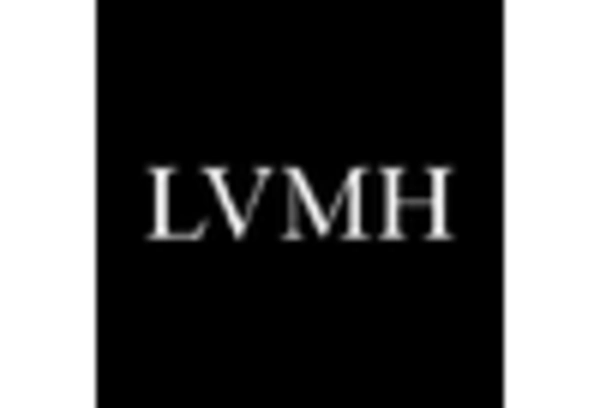E-commerce Expansion
The Luxury Goods Market is witnessing a transformative shift towards e-commerce, which has become a critical driver of growth. With the proliferation of digital platforms, luxury brands are increasingly adopting online sales strategies to reach a broader audience. Recent data indicates that online sales of luxury goods have surged, accounting for a significant portion of total sales. This shift is particularly evident among younger consumers, who prefer the convenience of online shopping. Additionally, luxury brands are investing in enhancing their digital presence, utilizing advanced technologies such as augmented reality and artificial intelligence to create immersive shopping experiences. The Luxury Goods Market is likely to benefit from this trend, as e-commerce continues to reshape consumer behavior and preferences, making luxury products more accessible than ever before.
Influence of Social Media
The Luxury Goods Market is significantly influenced by social media, which serves as a powerful marketing tool for luxury brands. Platforms such as Instagram and TikTok have become essential for brand visibility and consumer engagement. Influencers and celebrities play a pivotal role in shaping consumer perceptions and driving demand for luxury products. Recent studies suggest that a substantial percentage of consumers are inspired to purchase luxury items after seeing them featured on social media. This trend underscores the importance of digital marketing strategies in the Luxury Goods Market, as brands leverage social media to connect with their target audiences. Furthermore, the ability to create aspirational content allows luxury brands to cultivate a sense of exclusivity and desirability, which is crucial for maintaining their premium positioning in the market.
Rising Disposable Incomes
The Luxury Goods Market is experiencing a notable increase in disposable incomes across various demographics. As consumers gain more financial freedom, they are more inclined to invest in luxury items, which are often perceived as status symbols. In recent years, the number of high-net-worth individuals has surged, with estimates suggesting that the population of millionaires has grown significantly. This trend indicates a robust demand for luxury goods, as affluent consumers seek to enhance their lifestyles through premium products. Furthermore, the luxury sector has shown resilience, with a projected growth rate of approximately 5% annually, driven by this rising affluence. The Luxury Goods Market appears well-positioned to capitalize on this trend, as more consumers prioritize quality and exclusivity in their purchasing decisions.
Sustainability Initiatives
The Luxury Goods Market is increasingly prioritizing sustainability, as consumers become more environmentally conscious. Brands are adopting sustainable practices in their production processes, sourcing materials responsibly, and promoting ethical consumption. This shift is not merely a trend; it reflects a fundamental change in consumer values. Recent surveys indicate that a significant portion of luxury consumers are willing to pay a premium for sustainable products. Consequently, luxury brands are integrating sustainability into their core strategies, which not only enhances their brand image but also attracts a new segment of eco-conscious consumers. The Luxury Goods Market appears to be at a crossroads, where sustainability initiatives could redefine luxury, making it synonymous with responsibility and ethical practices.
Cultural Influences and Globalization
The Luxury Goods Market is profoundly shaped by cultural influences and globalization, which facilitate the exchange of ideas and trends across borders. As cultures intermingle, luxury brands are adapting their offerings to resonate with diverse consumer preferences. This cultural adaptability is crucial for brands seeking to expand their market presence in various regions. Recent data suggests that luxury consumption is on the rise in emerging markets, where consumers are increasingly drawn to international luxury brands. The Luxury Goods Market is likely to see continued growth as brands navigate these cultural dynamics, tailoring their marketing strategies to align with local tastes while maintaining their global appeal. This interplay between culture and luxury consumption underscores the complexity of the market and the need for brands to remain agile and responsive.


















Leave a Comment